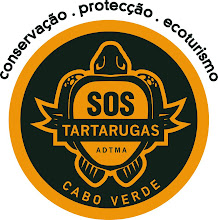The most amazing result has been the absence of turtle carapaces this year. Very few have been killed compared to previous years and there is a stunning difference between protected and non-protected beaches.
Total turtle emergences 810
Emergences on protected beaches 702
Emergences non-protected beaches 96
Emergences per day 10.5
Most emergences protected beach (Cotton Bay) 119 activities / 28 nests /5 dead
Most emergences non-protected beach (Mont Leao) 40 activities / 7 nests / 12 dead
Total nests 201
Nests on protected beaches 186
Nests on non protected beaches 15
Nests in situ 91
Nests trans situ (moved to a better place on beach) 29
Nests relocated to hatchery 66
Average eggs in hatchery nests 88.4
Average incubation time in hatchery 62
Hatching success rate 67%
Total dead turtles 34
Dead on protected beaches 19
Ratio of emergences of turtles to number killed on protected beaches 1 in 46
Dead on non protected beaches 15
Ratio of emergences of turtles to number killed on non protected beaches 1 in 6
Turtles saved by Rangers (found before being killed) 18
 as dragged many a Ranger and burly soldiers down the beach - she will not be thwarted
as dragged many a Ranger and burly soldiers down the beach - she will not be thwarted and she doesn't care if you want to measure or tag her. Even hunters cannot deter her, it was a close call - she was seconds away from being butchered and saved in the nick of time by the Rangers. And she is back, (who says the season is over?) yet another nest laid last night on Paradise Beach to add to the two already in the hatchery. We are expecting super-babies from those nests.
and she doesn't care if you want to measure or tag her. Even hunters cannot deter her, it was a close call - she was seconds away from being butchered and saved in the nick of time by the Rangers. And she is back, (who says the season is over?) yet another nest laid last night on Paradise Beach to add to the two already in the hatchery. We are expecting super-babies from those nests.



 hatchery. What is even more upsetting is that the residents and developers I have spoken to do not feel that their lights are a problem. Turtle friendly lights are just as good as regular lights and we believe that people buying property on Sal would want the turtles to keep coming to beaches near their houses. We feel even more determined now to rescue nests in areas like these until we can convince people to make some compromises to help the turtles.
hatchery. What is even more upsetting is that the residents and developers I have spoken to do not feel that their lights are a problem. Turtle friendly lights are just as good as regular lights and we believe that people buying property on Sal would want the turtles to keep coming to beaches near their houses. We feel even more determined now to rescue nests in areas like these until we can convince people to make some compromises to help the turtles.










